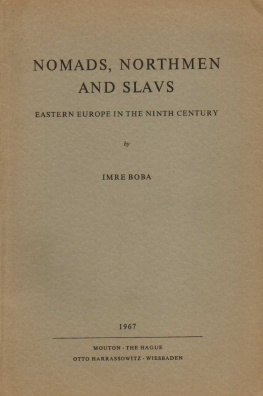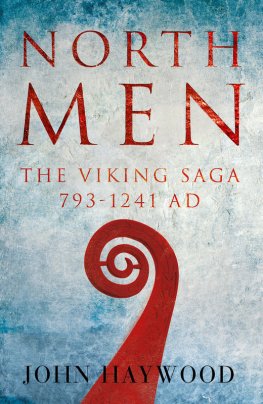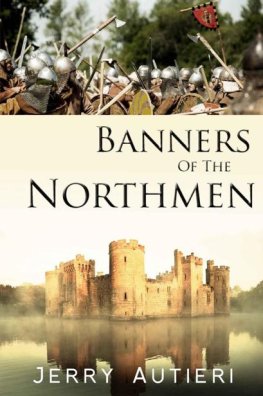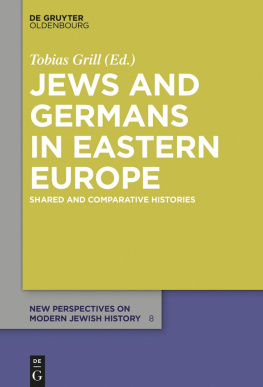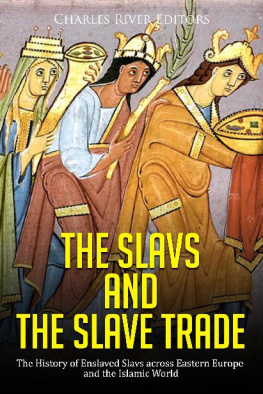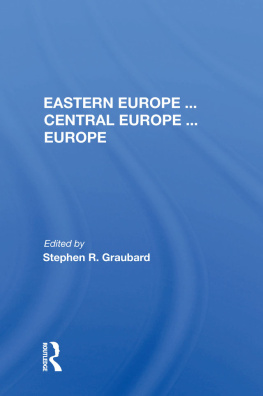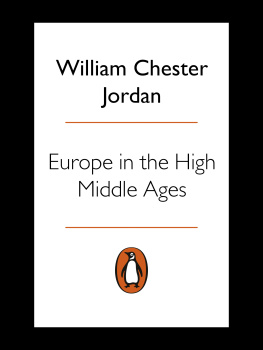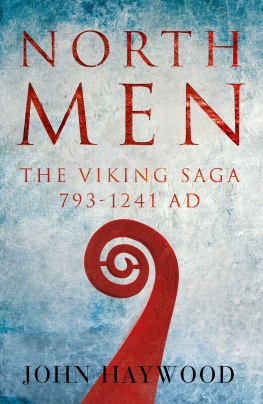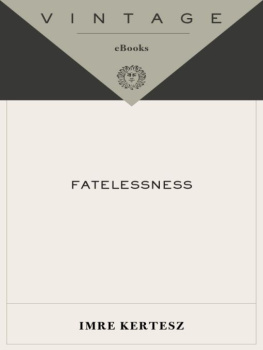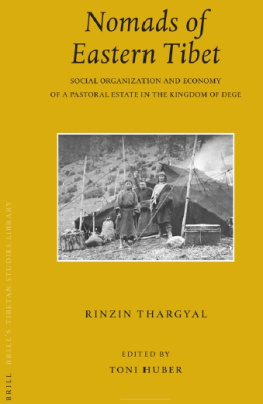Imre Boba - Nomads, Northmen and Slavs: Eastern Europe in the Ninth Century
Here you can read online Imre Boba - Nomads, Northmen and Slavs: Eastern Europe in the Ninth Century full text of the book (entire story) in english for free. Download pdf and epub, get meaning, cover and reviews about this ebook. year: 1967, publisher: Mouton, genre: History. Description of the work, (preface) as well as reviews are available. Best literature library LitArk.com created for fans of good reading and offers a wide selection of genres:
Romance novel
Science fiction
Adventure
Detective
Science
History
Home and family
Prose
Art
Politics
Computer
Non-fiction
Religion
Business
Children
Humor
Choose a favorite category and find really read worthwhile books. Enjoy immersion in the world of imagination, feel the emotions of the characters or learn something new for yourself, make an fascinating discovery.
Nomads, Northmen and Slavs: Eastern Europe in the Ninth Century: summary, description and annotation
We offer to read an annotation, description, summary or preface (depends on what the author of the book "Nomads, Northmen and Slavs: Eastern Europe in the Ninth Century" wrote himself). If you haven't found the necessary information about the book — write in the comments, we will try to find it.
Imre Boba: author's other books
Who wrote Nomads, Northmen and Slavs: Eastern Europe in the Ninth Century? Find out the surname, the name of the author of the book and a list of all author's works by series.
Nomads, Northmen and Slavs: Eastern Europe in the Ninth Century — read online for free the complete book (whole text) full work
Below is the text of the book, divided by pages. System saving the place of the last page read, allows you to conveniently read the book "Nomads, Northmen and Slavs: Eastern Europe in the Ninth Century" online for free, without having to search again every time where you left off. Put a bookmark, and you can go to the page where you finished reading at any time.
Font size:
Interval:
Bookmark:
SLAVO-ORIENTALIA
MONOGRAPHIENREIHE
BER DIE WECHSELBEZIEHUNGEN ZWISCHEN
DER SLAVISCHEN UND ORIENTALISCHEN WELT
unter Mitwirkung von
TADEUSZ LEWICKI (KRAKOW)
KARL HEINRICH MENGES (NEW YORK) FELIX TAUER (PRAHA.)
herausgegeben von
OMELJAN PRITSAK (CAMBRIDGE, MASS.)
BAND II
1967
MOUTON THE HAGUE
OTTO HARRASSOWITZ WIESBADEN
NOMADS, NORTHMEN AND SLAVS
EASTERN EUROPE IN THE NINTH CENTURY
by
IMRE BOBA
1967
MOUTON THE HAGUE
OTTO HARRASSOWITZ WIESBADEN
Copyright 1967 in The Netherlands. Mouton & Co. N.V., Publishers, The Hague.
No part of this book may be translated or reproduced in any form, by print,
photoprint, microfilm. or any other means without written permission from the publisher
LIBRARY CONGRESS CATALOG CARD NUMBER: 67-30546
3 9 2 4 4
Printed in The Netherlands by Mouton & Co., Printers, The Hague.
As Volume II of this series was to appear Tschwaschische Ortsnamen by the late Adalbert John Burghard. The volume was already printed in the spring of 1957 (157 pp.) and was ready for distribution, when because of interference of the widow of the late author, it had to be taken out.
In its place is now appearing the monograph by Dr. Imre Boba. It was his doctoral dissertation, which in its final form was directed by me during my academic activity at the University of Washington (1961-1964).
The problems in connection with the foundations of the Old Rus state are manifold and have been studied for more than 200 years. Naturally the dissertation of Dr. Boba does not pretend to be regarded as the last word, but the author was able to present this so often discussed topic in a fresh and original way. I will always remember our long discussions during his work on his dissertation when I was able to give him some advice and help him with my experience, especially in the treatment of the Arabic sources. But even playing the role of advocatus diaboli I interfered only if it seemed to me to be necessary for methodological reasons. Therefore, conceptions and hypotheses expressed in the book are Dr. Bobas own product and he takes all responsibility for them.
O. P
.
I am deeply indebted to Professors Omeljan Pritsak, Peter F. Sugar, Marc Szeftel and Donald W. Treadgold of the University of Washington for their interest in my study, for their reading of several drafts, and for their profitable suggestions. While agreeing with them that many of my concepts may be considered bold and in need of further documentation, I submit this study for consideration and criticism in the belief that it may initiate a useful scholarly discussion.
I am grateful to the Far Eastern and Russian Institute of the University of Washington and to the trustees of the Agnes H. Anderson Fund (University of Washington) and of the Relm Foundation for their generous grants which facilitated the completion of this study. I also wish to express my thanks and appreciation to Miss Gladys Greenwood, editor of Far Eastern and Russian Institute University of Washington publications, and to my wife for their efforts in making the text more readable.
Editors Preface............. 5
Acknowledgements............. 7
Introduction............. 11
I. The role of the Dnieper river in the early history of Eastern Europe............. 18
A. Put iz Variag v Greki............. 19
B. Theories based on the Annales Bertiniani............. 23
C. The testimony of Muslim sources............. 27
D. Byzantine sources and the Rusian Primary Chronicle............. 31
E. The role of the Nomads............. 35
II. Pax Chazarica............. 39
A. Nomadic state formations in Europe (sixth to ninth century)............. 40
B. The Avars and the Slavs............. 43
C. Origins of Kiev............. 47
III. The Khazars and the eastern Slavs............. 56
A. The chronology of the tributary affiliation of the Slavs............. 56
B. The testimony of Muslim sources............. 59
C. The forms and extent of the affiliation............. 63
IV. End of the Pax chazarica............. 69
A. The fortress of Sarkel on the Don............. 70
B. The Proto-Hungarians in the Pontic steppes............. 74
V. The Onogurs in the ninth century............. 77
A. The evidence of Byzantine and western sources............. 78
B. The evidence of Muslim sources............. 81
VI. The Majghari in Eastern Europe............. 87
A. Theories of the origin of the Magyars (i.e., Hungarians)............. 87
B. A new approach to the controversy; a theory of a Meshcher - Majghari continuity............. 92
C. Meshchers and the Rus center of Artha............. 98
.............
VII. The invitation of the Ruses............. 102
A. The terms Varangian and Rus............. 102
B. The historicity of the Invitation............. 108
C. The chronology of the Invitation............. 109
VIII. Eastern Europe after 850............. 113
A. The geopolitical situation............. 113
B. Askold and Dir in Kiev............. 118
C. The Ruses: Varangians and Autochthons............. 122
D. The Ruses of Oleg and the Slavs............. 125
IX. Nomads, Northmen and the Slavs............. 130
Index of Geographic. Ethnic and Personal names; Sources Authorities............. 133
The Primary Chronicle, our main source of information on Early Rus. presents the history of Eastern Europe during the ninth century in its full complexity. This history was shaped by elements of internal, external, and international developments. The first dated entries of the Chronicle already singled out the Varangians and the Khazars as two forces that continued to play important roles in these developments. The Chronicler was also aware of the participation in these events of other, non-Slavic, peoples of Eastern Europe. As the narrative of the Chronicle continues, we notice references to the Byzantine Greeks, to peoples of the western part of Europe, and, in a more dramatic context, to the various nomadic groups which moved into and disappeared from the Pontic Steppes.
The Rus Chronicler presents the history of Rus in its entirety. Setting himself the task of describing from where the land of Rus has its beginnings, he did not yet have a definite answer in mind, but posed the question and proceeded to give a full answer. He presented the whole history of Rus as it appeared to him, with no bias, preferences, or assumptions. We may regret that he has no answers to certain questions we should like to pose, but this only shows that for him other issues were of greater importance.
Our knowledge of contemporary Muslim, Byzantine, and Western sources confirms that the observations made by the Chronicler are in many instances strikingly accurate. Much can still be done to extract the full information contained in the Chronicle and thus to deepen our understanding of Kievan Rus.
There are in the Chronicle some ambiguities which, unfortunately, have been interpreted in modern times to support the contention that the Northmen played a dominant role in the process of formation of the Kievan State. The so-called Normanist theory, which originated in the early eighteenth century, explicitly or implicitly makes value judgments
The so-called Normanist controversy began in the early eighteenth century, when Theophilus (Gottlieb) Siegfried Bayer (1694-1738) published a collection of sources and some studies on the Scandinavian origin of the Varangians and of the Rurykid dynasty. The sources assembled by Bayer were used by Gerhart Friedrich Mller
Font size:
Interval:
Bookmark:
Similar books «Nomads, Northmen and Slavs: Eastern Europe in the Ninth Century»
Look at similar books to Nomads, Northmen and Slavs: Eastern Europe in the Ninth Century. We have selected literature similar in name and meaning in the hope of providing readers with more options to find new, interesting, not yet read works.
Discussion, reviews of the book Nomads, Northmen and Slavs: Eastern Europe in the Ninth Century and just readers' own opinions. Leave your comments, write what you think about the work, its meaning or the main characters. Specify what exactly you liked and what you didn't like, and why you think so.

